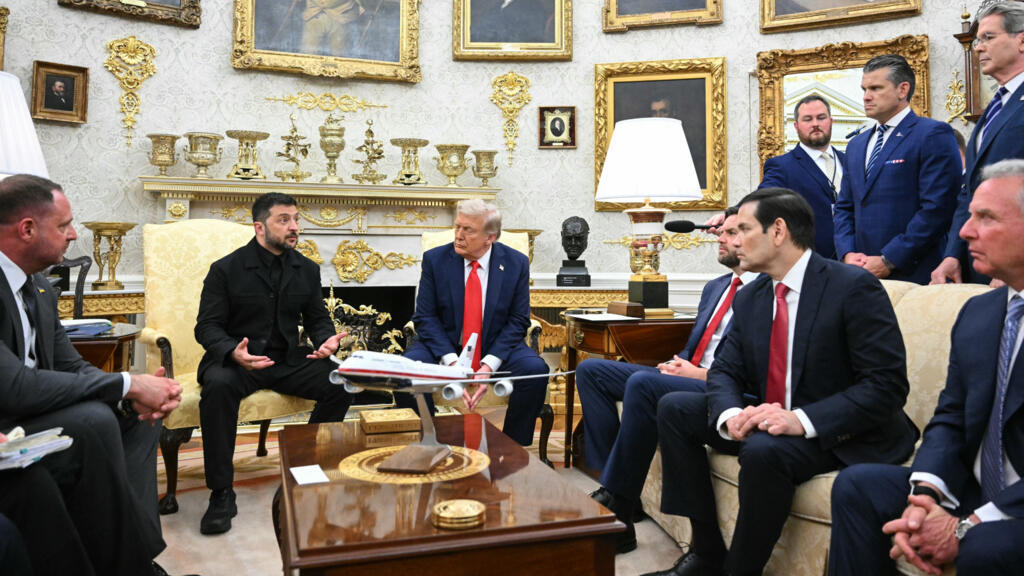When athletes began to return their 2024 Paris Olympic medal, after scrapping them, it was a omen of incoming things.
The medals were designed by French jeweler Chumet, owned by luxury-giants LVMH.
Although the French mint produced the medal, the poor publicity fell on LVMH, as it created a spectacle of its corporate sponsorship of the game.
A luxury pioneer in recession, too?
Paris -based LVMH is not coroding, but it is not very good.
At the end of 2022, the company’s market price Bernard Arnault, adequately increased to make its founder and president, controls about half of the company’s shares, which is the world’s richest man. Since then, there has been a significant decline in the price of its share.
Luis is the owner of 75 brands such as Wuiton, Dior and Jewelers Bulgari and Tiffany & Company, which is suffering from slowing down the sales after the Kovid Boom.
The results of the half-year released on July 24 suggest that the revenue was 4% less than the same period of six months in 2024. Recurring operations reduced the profession by 15% and came to € 9 billion ($ 10.5 billion).
In areas such as alcohol, souls, fashion and leather items, the first half of the year saw a decline in revenue and operational benefits. While its watches, jewelry, perfume and cosmetics remain stable.
LVMH stated that the company “showed good flexibility and maintained its powerful innovative pace despite an obstructed geo -political and economic environment.” The demand in Europe was “solid” and “stable” in the US.
Rising prices and more overstock
It is not just LVMH who suffers. Kairing, which is located in Paris and owns Gucci, Bottega Venetta and Yaves St. Laurent, recorded a significant decline in sales in the first half of the year.
“Luxury is in a death spiral,” Katherine in the guest essay of December 2024. Zarela predicted. new York Times“After almost a decade, after almost a decade, the region is bombing worldwide. Analysts point to the low-bear buyers in their expenses and slow demand in China.”
A long -term fashion editor Zarela saw bad Omen around, like rising prices and poor quality. In addition, more brands are selling overstocks at discount outlets. The more ubiquitous luxury becomes, the less desirable.
He said, “Once tangled establishments that are proud of craftsmanship, service, cultivate a sensible and loyal customer base, have become large -scale marketing machines that are elegant and unique as the Times Square M&M store,” he concluded.
Painful tattiff from america
There is another headache for the unwanted industry on tattf. Currently, the Trump administration has imposed 15% tariff on European Union goods and 39% tariff on Swiss goods.
This can be real consequences for important American markets, a lot of luxury items are made in France or Italy and a lot of watches come from Switzerland.
Generally, people spend more independently on individual luxury goods when they are optimistic about the future. But thesis tariffs can go up, go down or disappear.
Nobody knows how business talks will move forward, and many are just liked to wait and see.
Chinese shopkeeper more careful
In China, some brands are fixing, others are below, called ImK Vouter, a partner of Consultancy Oliver Vomit and a retail expert with 15 years of experience in China.
Looking forward, the Wouters feel that the industry will see a more modern growth than in recent times. “It’s not like a high days when all luxury brands were doing well,” he told DW. The winners and losers will be.
European luxury goods will not affect the US TATF Chinese buyers, but geopolitical uncertainty is keeping them closer to the house. In the past, the Chinese house constitutes about 40% of its luxury goods. Now, as they discover the mainland China again, the Uouters feel that about 75% of the country is defective.
But as the Chinese economy struggles, many aspiring shopkeepers have gone away, and those who are left may be less eager to spend on luxury goods.
To be successful with the remaining Chinese shopkeepers, luxury companies have to double their main customers and customer experiences, calling Wouters. They have to offer some unique offers and Sura Price Hike reflects better quality.
Massive on the way
Along with keeping many buyers back, the luxury goods industry can withstand its biggest shock of the financial crisis of 2008-2009, not in the count of Kovid shock, according to A. New report By Consultancy Bain & Company.
Last year, luxury sales were globally below 1%. This year has declined further. The ban analyst estimated a moderate drop of 2–5% for the industry by the end of the year. They believe that its possibilities want to be bright in the future.
Claudia D’Rapizio and Federica Leveto wrote in a press statement, “Increasing global income, general wealth transfer, and an estimated 20% increase in the number of high-net-world persons will expand the pools of potential luxury buyers.”
But a large pool of the shopkeeper is not enough, warned the pair. “Brands will need to reconsider how they attach young consumers, avoid more dependence on top sponses, and create emotional connections that go beyond the loyalty of transactions.”
Edited by: Ashutosh Pandey


